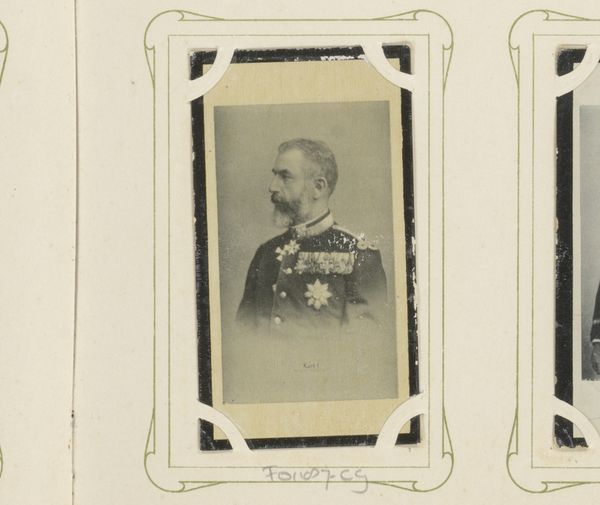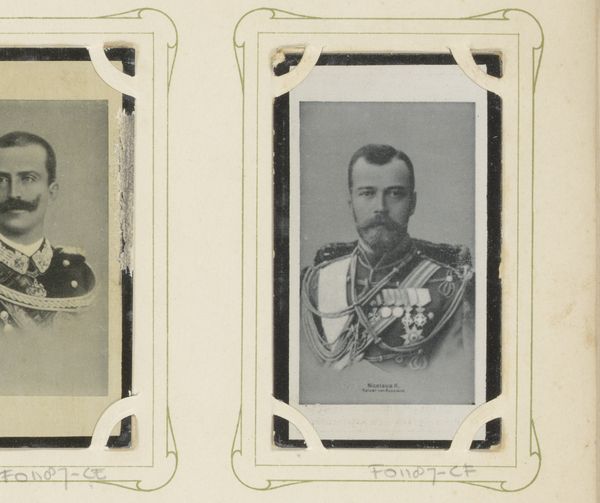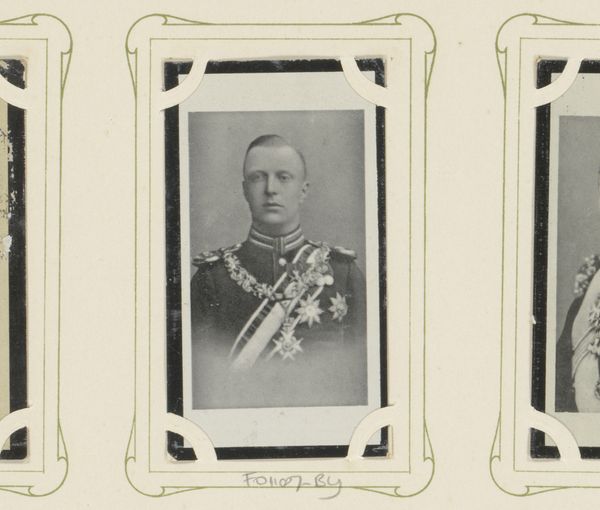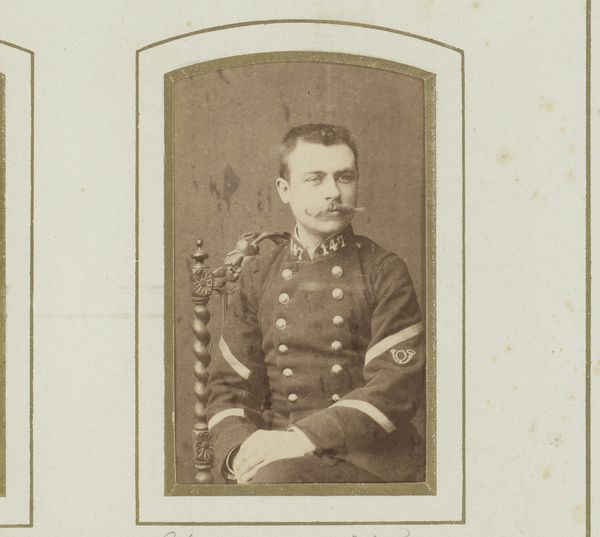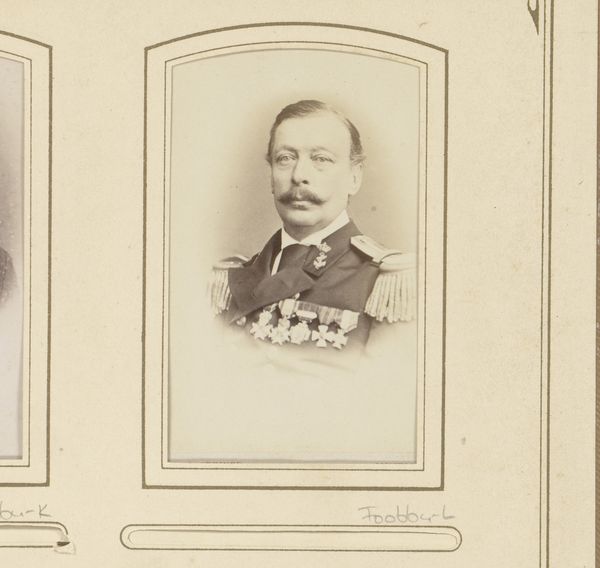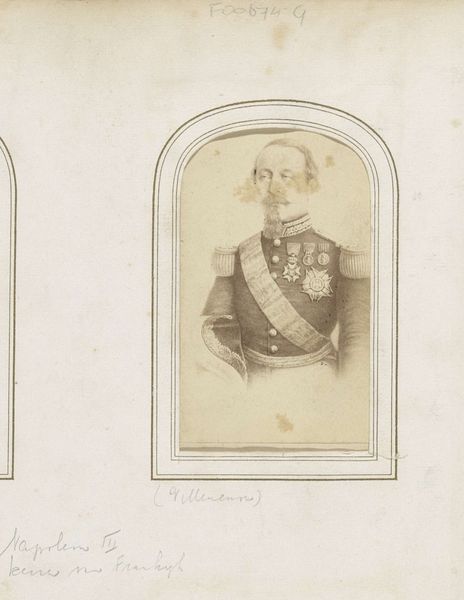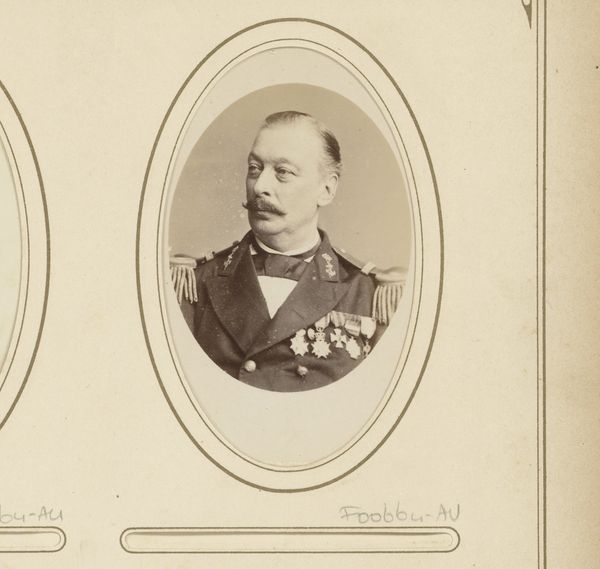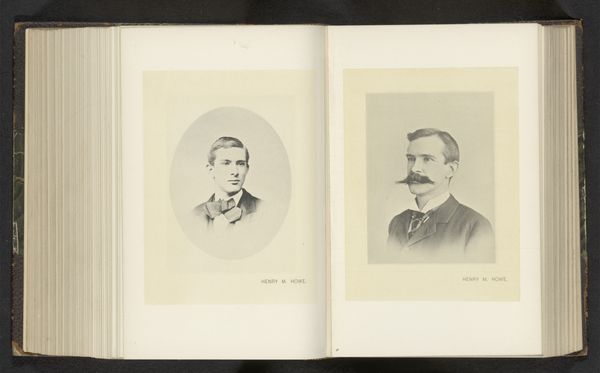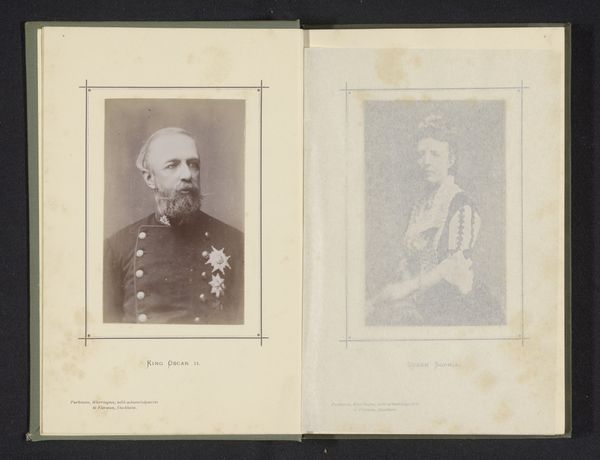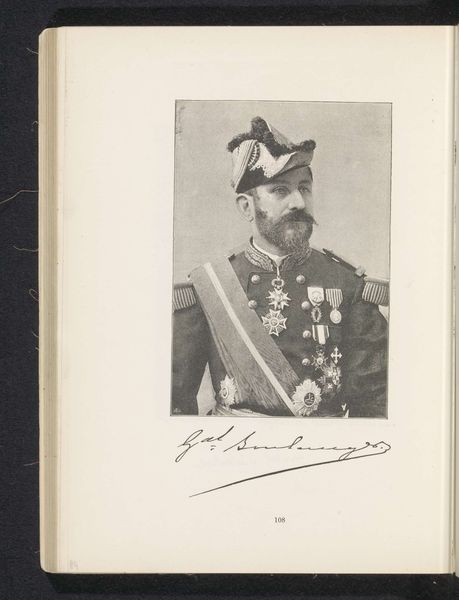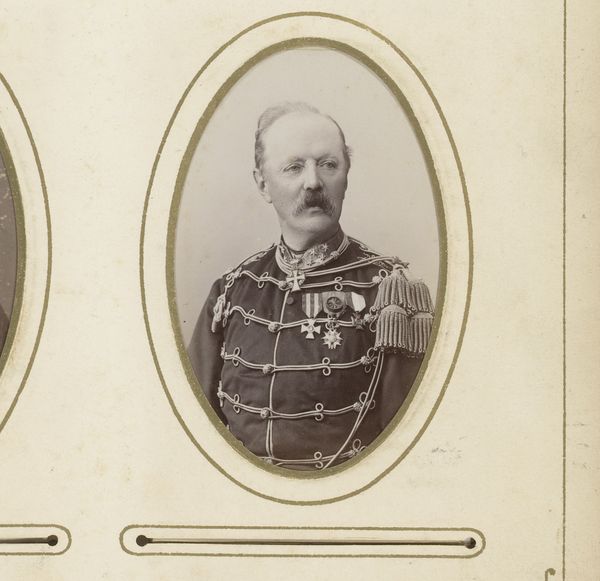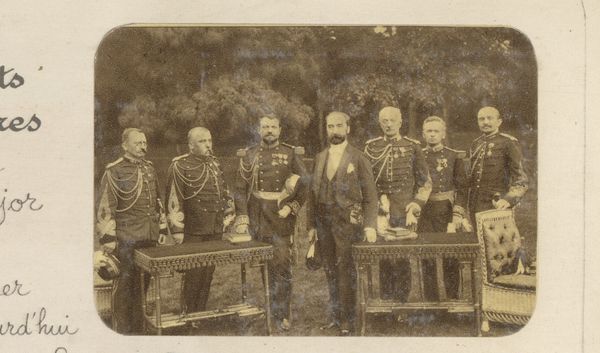
print, photography, mezzotint, engraving
#
portrait
# print
#
asian-art
#
photography
#
mezzotint
#
engraving
Dimensions: height 383 mm, width 266 mm
Copyright: Rijks Museum: Open Domain
Curator: This is "Five Portraits of Japanese Military Leaders," likely produced before 1896, and created using photography and mezzotint engraving techniques. Editor: The composition is immediately striking; five ovals arranged as if observing us. The formal tone is inescapable. Curator: Indeed, the strategic arrangement utilizes semiotic framing to assert order and hierarchy. Observe how General Viscomte Kawakami occupies the central position, larger and more detailed, symbolizing his paramount authority. Editor: The materiality speaks volumes too. Consider the production process—photography providing the base image, subsequently reworked and refined through meticulous engraving. The resulting prints mass-produced for distribution. The mechanization offers a level of idealization, and hints at propaganda uses in disseminating images of power and solidifying nationalist sentiment at the time. Curator: Precisely! And we mustn't overlook the contrast between the soft tonality achieved via mezzotint and the sharp, delineated lines of the engraving. This tension adds a visual interest and elevates what could be merely a documentary piece into an artful statement of character and position. Look closely and note how each face seems subtly shaped and styled via these production processes. Editor: The standardization offered through print also subtly equalizes access to those idealized portrayals of political power, yet the means of that standardization requires a degree of artisanship, perhaps underplaying the industrial processes inherent to it. I imagine that this print would likely circulate primarily amongst military families in that era. It presents intriguing questions regarding power, portraiture, and labor relations within Japanese military contexts of that time. Curator: I appreciate you noting the broader context surrounding the work; for me, these individual shapes, arranged carefully on the page, exemplify visual cues to decode a culture. Each individual portrait tells an allegorical story, emphasizing ideals through line, contrast and, of course, position. Editor: And to conclude, what began for me as a survey of material and process ends up being a fascinating intersection of power, print production, and the faces of the Meiji era leadership.
Comments
No comments
Be the first to comment and join the conversation on the ultimate creative platform.
